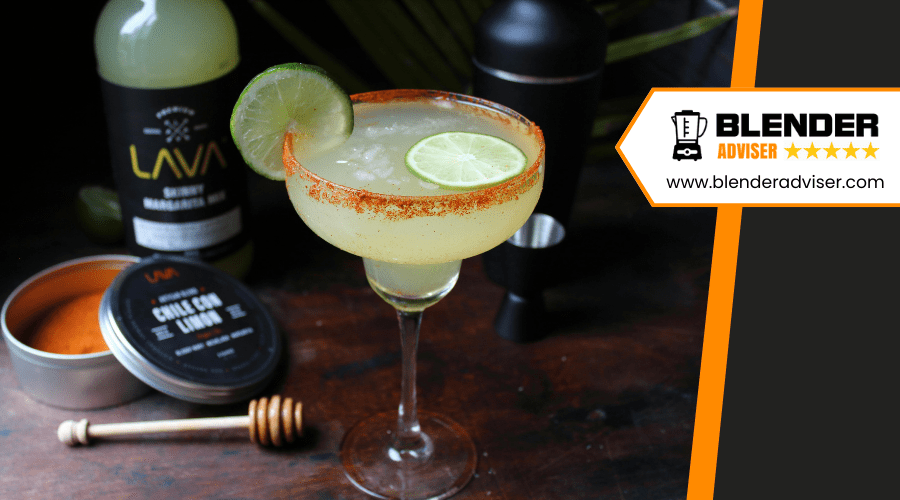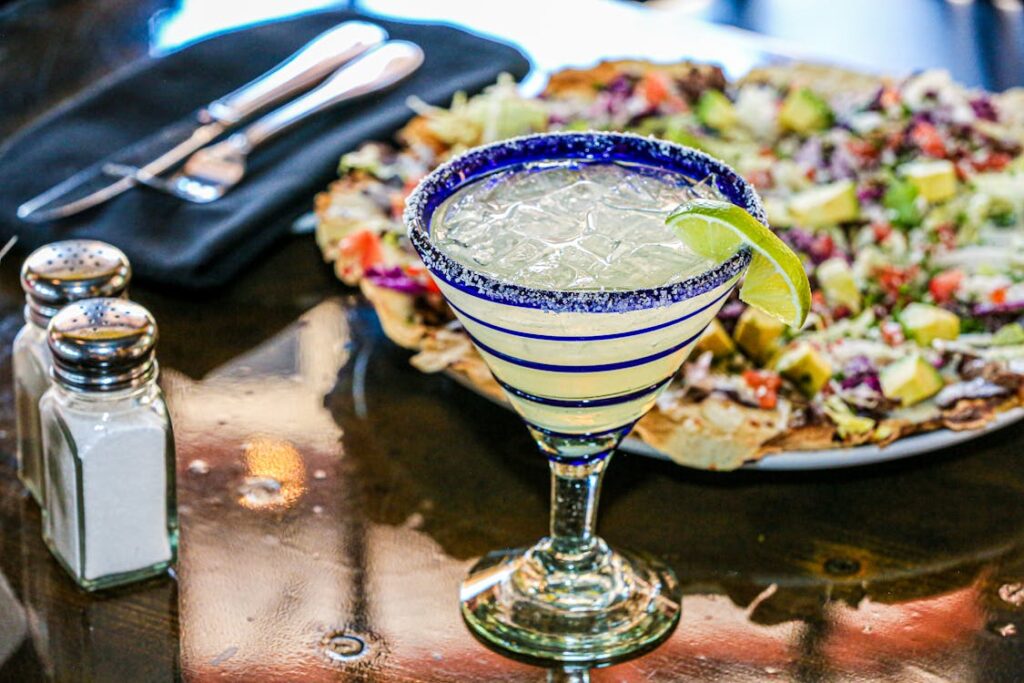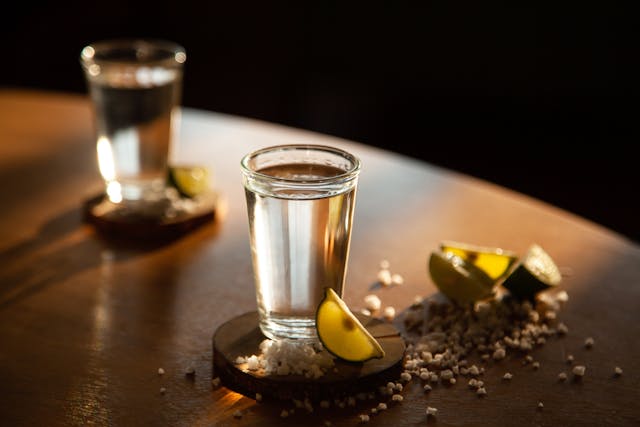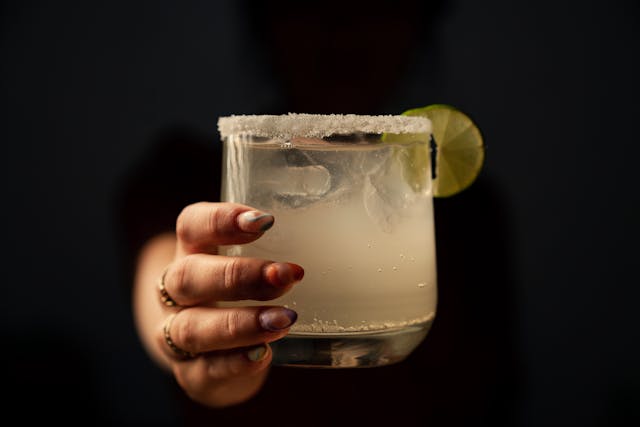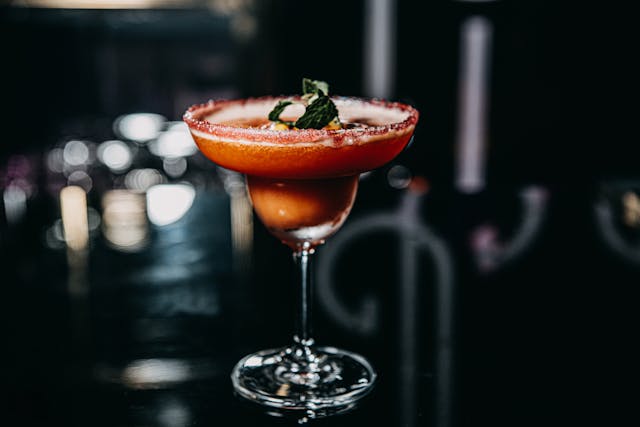You might think the origins of the Margarita are well-documented, but in reality, its history is as blended as the drink itself. Various accounts attribute its creation to different individuals and places, from Doña Bertha in Rosarito to Danny Negrete in Acapulco, making it a cocktail shrouded in mystery.
With its first recorded mention in 1953, the Margarita’s past is a mix of folklore and fact, stirring debates among enthusiasts. As you explore this cocktail’s intriguing journey from obscure origins to global fame, you’ll uncover how its evolution reflects broader trends in cocktail culture.
Why does this matter, you might wonder? Because understanding the Margarita’s true genesis offers insight into the cultural tapestry of the 20th century, revealing how a simple drink can encapsulate history, innovation, and the enduring quest for the perfect blend.
Early Claims and Legends
The Margarita’s origin is shrouded in mystery, with various individuals and locations claiming the honor of its creation. You’ve likely heard of Carlos Herrera, Johnny Durlesser, and Francisco Morales, each asserting they’re the genius behind the Margarita. Their tales whisk you away to places like Rosarito Beach, Galveston, and Acapulco, each locale steeped in its own version of the cocktail’s birth.
Delving deeper, you’ll find the naming of the Margarita itself is a topic of contention. Was it named for a woman named Margaret, Margarita, or Marjorie? Theories abound, adding another layer of intrigue to the cocktail’s storied past. It’s as if every sip whispers a different tale.
Within these early claims, dating back to the 1930s, bartenders like Doña Bertha have been woven into the narrative, each adding their unique twist to the Margarita’s recipe and history. The blend of these stories creates a cocktail of myths and legends, making the Margarita’s origin not just a question of who or where, but a fascinating puzzle that captivates your imagination.
The Tequila Daisy Theory
Shifting focus to another intriguing aspect, consider the Tequila Daisy theory that posits the Margarita evolved from this 1930s cocktail. The Tequila Daisy, blending tequila, citrus juice, and sweetener, laid the groundwork for what you now recognize as the Margarita. This theory not only highlights the cocktail evolution but also underscores a pivotal moment: the substitution of brandy with tequila. This swap wasn’t just a simple change of ingredients; it signified a broader shift towards tequila-based mixed drinks in the cocktail scene.
Understanding the Tequila Daisy theory offers a glimpse into the historical roots of the Margarita cocktail. It’s fascinating to see how a seemingly straightforward substitution led to the development of a new and popular drink. This transition marks a noteworthy chapter in the evolution of cocktails, illustrating how changes in preferences and ingredients can give rise to iconic beverages.
The story of the Tequila Daisy and its transformation into the Margarita showcases the dynamic nature of the cocktail scene. It’s a testament to how creativity and experimentation with tequila, citrus juice, and sweetener can result in a drink that captures the imagination of drinkers worldwide.
The Picador Connection
You might find it fascinating that the Picador, a cocktail from a 1937 UK book, shares key ingredients with the Margarita and predates its first known mention by 16 years.
This connection points to a possible evolutionary link between the two drinks, suggesting the Picador could have inspired the Margarita we know today.
Exploring this connection sheds light on early cocktail inspirations and the gradual evolution from the Picador to the Margarita.
Early Cocktail Inspirations
Delving into the Picador’s recipe from 1937 reveals its striking resemblance to the Margarita, suggesting an influential link in the cocktail’s history. This early cocktail inspiration isn’t merely a footnote; it’s a pivotal chapter in the evolution of tequila-based mixed drinks. By examining the Picador, you uncover the layered history and incremental steps leading to the Margarita’s eventual prominence.
- The Picador combines tequila, lime juice, and triple sec—identical to the Margarita.
- Predating the Margarita by 16 years, it showcases the cocktail’s deep roots.
- Highlights the historical context of cocktail culture’s evolution.
- Suggests a lineage connecting tequila-based cocktails.
- Offers insight into early inspirations shaping today’s cocktail scene.
Understanding the Picador’s role illuminates the Margarita’s storied past.
Picador-Margarita Evolution
How did the Picador, a British cocktail from 1937, pave the way for the creation of the Margarita? This mixed drink, with its blend of tequila, lime juice, and triple sec, mirrors the key components of the Margarita, suggesting a fascinating evolution in cocktail history.
The Picador stands as a significant ancestor to the Margarita, predating its first known mention by 16 years. Its existence not only provides historical context for the Margarita’s development but also highlights the potential inspiration drawn from earlier concoctions.
The connection between the Picador and the Margarita underscores the dynamic nature of cocktail recipes, evolving and adapting over time. This tale of the Picador-Margarita evolution reveals how cocktail recipes can influence and inspire one another, ultimately leading to the creation of cherished classics like the Margarita.
Margarita’s Name Origin
Exploring the origins of the Margarita’s name reveals a fascinating blend of theories connected to feminine names like Margaret, Margarita, and Marjorie. These names, steeped in cultural references and personal stories, have sparked much speculation among cocktail historians. The quest to pinpoint the exact inspiration behind the Margarita’s name immerses you in its mysterious and intriguing history.
The theories surrounding the Margarita’s name origin include:
- The possibility that the cocktail was named after women named Margaret, Margarita, or Marjorie, known to the creator.
- Speculation that popular cultural references or notable figures of the time influenced the naming.
- Theories suggesting the name embodies the spirit and zest of the drink, drawing from feminine names that convey similar qualities.
- Cocktail historians debating various stories and legends, adding layers of mystery to the Margarita’s origins.
- The enduring fascination with uncovering the true inspiration behind the name, which remains an engaging topic for enthusiasts.
The Margarita’s name origin, woven from theories, feminine names, and cultural references, continues to fuel speculation and discussion, highlighting the cocktail’s enduring appeal and captivating history.
Key Ingredients Evolution
Over time, the Margarita’s key ingredients have evolved, focusing on quality and authenticity to enhance the cocktail’s classic flavor. Originally, the classic Margarita recipe called for a simple blend of blanco tequila, orange liqueur, lime juice, and a lime wedge for garnish. However, the shift towards using high-quality, 100% agave tequila has marked a significant evolution in crafting this iconic cocktail. You’ve likely noticed that the depth and smoothness of high-quality tequila can transform the Margarita from a mere drink to an experience.
Moreover, the insistence on freshly squeezed lime juice over pre-packaged alternatives ensures that your Margarita has that bright and vibrant citrus taste that’s so crucial. The balance achieved by the tartness of the lime, the sweetness of the orange liqueur, and the agave notes of the tequila is what makes the Margarita stand out. It’s not just about mixing these ingredients; it’s about how they harmonize to create something truly special.
The evolution towards prioritizing fresh lime juice, agave nectar, and high-quality tequila in your Margarita recipe doesn’t change the cocktail’s essence. Instead, it serves to elevate the classic Margarita, giving it a purity and authenticity that’s hard to beat.
Variations Over Time
As the years have passed, the Margarita has seen numerous variations, from frozen concoctions to fruit-infused delights, reflecting its enduring appeal and versatility. You’ve probably noticed that your favorite cocktail menu now boasts an array of Margaritas, each with its unique twist. Thanks to innovative bartenders and evolving tastes, the Margarita has journeyed far from its classic origins.
Here are some key developments in the evolution of the Margarita:
- Frozen Margaritas: Popularized in the 1960s, they brought a new texture and coldness that revolutionized how people enjoyed this cocktail.
- Fruit-infused Margaritas: These variations introduced a spectrum of flavors, from the tangy to the exotic, appealing to a broader audience.
- Julio Bermejo’s Tommy’s Margarita: This twist, with agave nectar replacing triple sec, marked a shift towards simplicity and quality, emphasizing the natural sweetness of agave.
- Modern variations: Incorporate high-quality tequilas, fresh fruit juices, and artisanal ingredients, showcasing the craftsmanship behind cocktail making.
- Creative interpretations: Bartenders continue to push boundaries, offering innovative twists that cater to modern palates and preferences.
These developments highlight the Margarita’s adaptability and the cocktail world’s commitment to innovation, ensuring that there’s always a new Margarita experience waiting for you.
Margarita Glass Innovation
The margarita glass, with its iconic wide rim and shallow bowl, plays a crucial role in the presentation and enjoyment of this beloved cocktail. Invented to complement the unique flavors and aesthetics of the margarita, this glassware’s design allows for easy rimming with salt, a key component in the traditional recipe that balances the sweet and sour notes of the cocktail. The wide rim also provides ample space for garnishes like lime wedges or slices of orange, adding a pop of color and an extra layer of flavor.
This innovative glass wasn’t just a random choice; it was a thoughtful addition to the history of the margarita, enhancing the way bartenders and enthusiasts alike could present and savor the cocktail. By showcasing the vibrant colors and layered ingredients of tequila, orange liqueur, and lime juice, the margarita glass elevates the drinking experience. It’s a testament to how glassware can transform a simple cocktail into a visual and gustatory masterpiece, solidifying its place in cocktail history. So, next time you’re sipping on a margarita, remember the thoughtfully designed glass that makes every sip just a bit more special.
Global Popularity Surge
In the 1950s, the Margarita’s allure swept across the globe, transforming it into a cocktail cherished far and wide. Its ascent wasn’t just by chance; a concoction of advertising campaigns, influential endorsements, and cultural phenomena played pivotal roles. You’d be intrigued to know how this drink, tied to figures like Dallas restaurateur Mariano Martinez, Francisco ‘Pancho’ Morales, and socialite Margaret Sames, became a global sensation.
Here are factors that contributed to its global popularity surge:
- *Esquire magazine* featured the Margarita as the December 1953 Drink of the Month, significantly boosting its appeal.
- Advertising campaigns cleverly positioned the Margarita, leveraging its exotic flair and accessibility.
- The song *’Margaritaville’* by Jimmy Buffett and *’Margarita Time’* by Status Quo embedded the cocktail in popular culture.
- By 2004, its status as America’s most popular mixed drink underscored its enduring appeal and cultural impact.
- Social connections and word-of-mouth played a substantial role, as tales of the Margarita’s origin stories captivated imaginations worldwide.
The Margarita’s journey from a simple Mexican concoction to a global symbol of leisure and celebration is a testament to the power of culture, marketing, and a good story.
Conclusion
You’ve journeyed through the murky history of the Margarita, encountering tales of its disputed birth, from Rosarito Beach to Galveston’s shores. You’ve pondered the Tequila Daisy theory and the Picador connection, learning how the Margarita’s name possibly came to be. You’ve seen how its key ingredients evolved and marveled at the cocktail’s many variations.
From the unique Margarita glass to its global popularity surge, you now understand the cocktail’s complex lore, a blend as intriguing as the drink itself.

